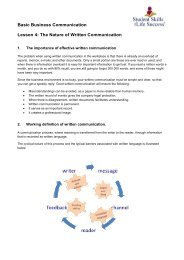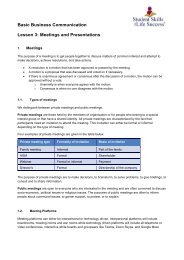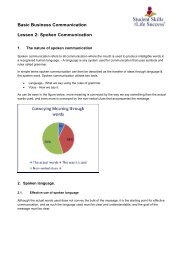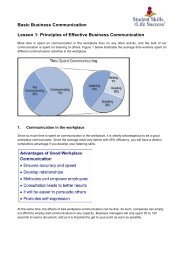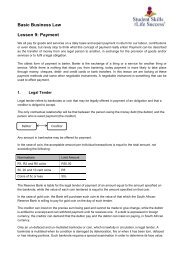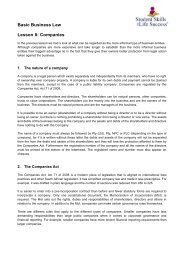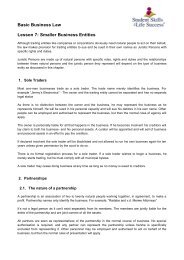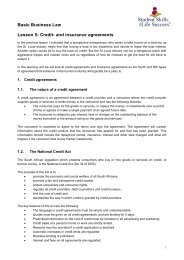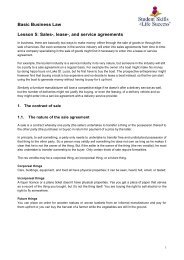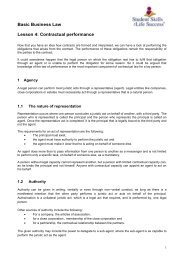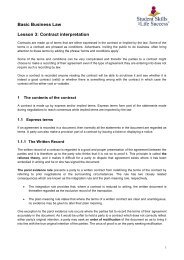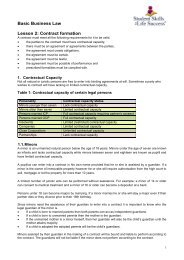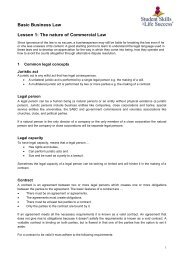Purchasing and Financing 2024
Purchasing- and Financial Management For 2nd year CATS learners. Aligned to the outcomes of the German accredited certification: “Industrie Kaufmann/frau”.
Purchasing- and Financial Management
For 2nd year CATS learners.
Aligned to the outcomes of the German accredited certification: “Industrie Kaufmann/frau”.
Create successful ePaper yourself
Turn your PDF publications into a flip-book with our unique Google optimized e-Paper software.
Quantity<br />
A) Fixed Quantities Ordering System<br />
In a fixed quantities system, the optimal order quantity is ordered when the re-ordering<br />
level is reached.<br />
But since consumption is not constant the time intervals between orders will vary greatly.<br />
If consumption slows down the time between orders will increase <strong>and</strong> if it picks up the<br />
time between orders will decrease.<br />
The advantages of the fixed ordering quantities system is that the most economical<br />
quantity will be ordered whenever an order is placed. This way total purchasing costs are<br />
minimized. Furthermore, this system is very simple to implement, as only the re-ordering<br />
level has to be monitored.<br />
A disadvantage of this system is obvious if the rate of consumption is frequently changing.<br />
If consumption increases dramatically the safety stock could easily be depleted <strong>and</strong> if<br />
consumption slows down dramatically the maximum stock level could be exceeded on<br />
delivery.<br />
Max Stock<br />
Q2<br />
Q3<br />
Q1<br />
Order Level<br />
Safety Stock<br />
T1 T2 T3<br />
Time<br />
Where Q1 = Q2 = Q3, but T1 ≠ T2 ≠ T3 as...<br />
T1 = Increased Consumption<br />
T2 = Decreased Consumption<br />
T3 = Normal Consumption<br />
15




